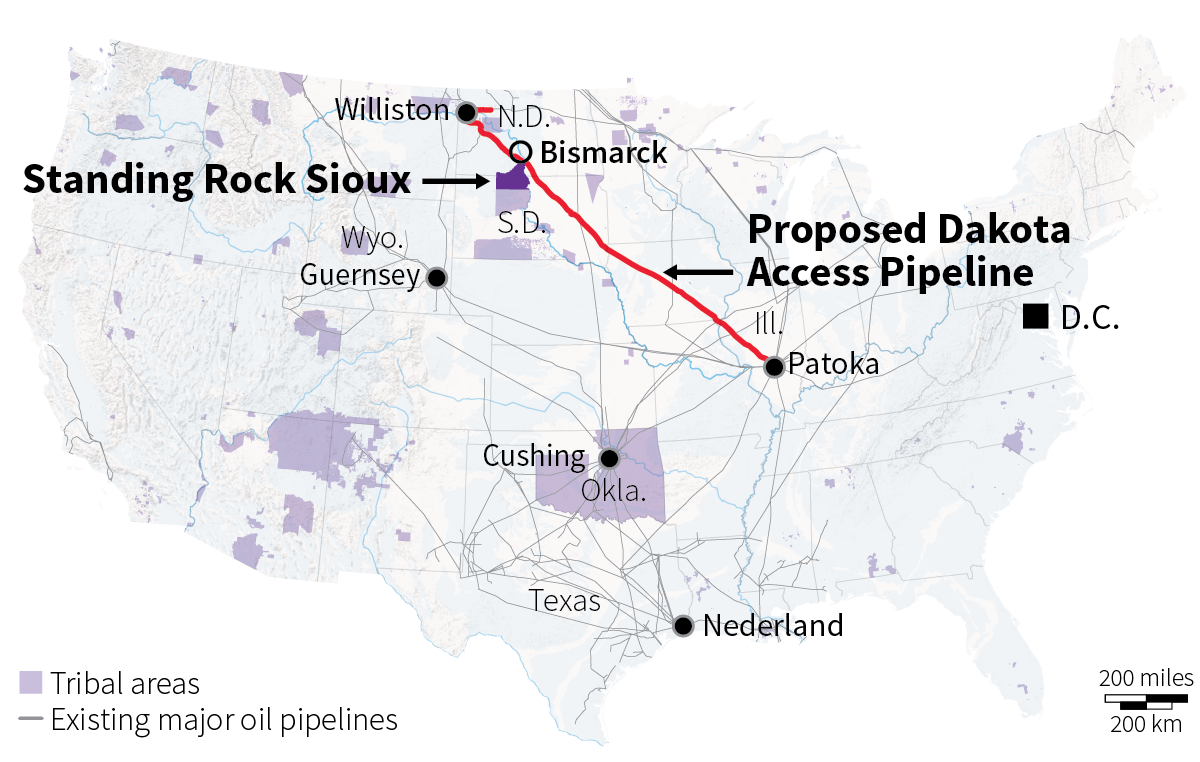WASHINGTON/HOUSTON – The U.S. Army Corps of Engineers will grant the final permit needed to finish the Dakota Access Pipeline, a controversial project to move oil quickly to the U.S. Gulf Coast that sparked protests by Native American tribes and climate activists.
In a Tuesday court filing in U.S. District Court in Washington D.C., the U.S. Army said it would grant an easement to tunnel under Lake Oahe, a reservoir that is part of the Missouri River, allowing completion of the last remaining unfinished stretch of the line.
Reversing the position of predecessor President Barack Obama, President Donald Trump issued an executive order days after being sworn in on Jan. 20 that directed the Corps to smooth the path to finishing the line.
The 1,170-mile line will bring crude oil from North Dakota’s Bakken shale region to Patoka, Illinois, and from there connect to the Gulf of Mexico, where many U.S. refineries are located.

“It’s great to see this new administration following through on their promises and letting projects go forward to the benefit of American consumers and workers,” said John Stoody, spokesman for the Association of Oil Pipe Lines.
The $3.8 billion line is being built by Energy Transfer Partners and is expected to be operational by midyear.
The Standing Rock Sioux tribe, whose reservation is adjacent to the line’s route, has said it would fight the decision but was not available for comment on Tuesday. The tribe fears contamination of drinking water and damage to sacred sites on its land.
Standing Rock denounces Army easement announcement, vows court challenge: https://t.co/UlhpngSmc1
— Standing Rock Sioux (@StandingRockST) February 7, 2017
Numerous activists who have been protesting in North Dakota have vowed to stay, although the primary protest camp is on a flood plain on Army Corps land and is being cleared.
“The granting of an easement, without any environmental review or tribal consultation, is not the end of this fight. It is the new beginning. Expect mass resistance far beyond what Trump has seen so far,” said Tom Goldtooth, executive director of the Indigenous Environmental Network, one of the primary groups protesting the line.
The protests resulted in the Obama administration’s decision in early December to delay a final permit that would allow construction under the Missouri River. That victory was a short-lived one, however, as Trump, then president-elect, voiced support for the pipeline.
The Obama administration later also ordered an additional environmental assessment, but that will not be conducted following Tuesday’s decision.
Douglas Lamont, a senior official with the Army’s Civil Works department, said in a memo on Tuesday that he believes there is “no cause for completing any additional environmental analysis,” in part because of previous assessments by the Corps in 2016.
Senator Heidi Heitkamp, Democrat of North Dakota, praised the decision.
“Throughout continued delays and stalling tactics during the last administration, I’ve been pushing for the certainty our communities need, and as the Army Corps delivers the finality they deserve today, it’s crucial that all parties double down in their resolve to listening and working together,” she said.
Law enforcement and protesters clashed violently at the site on several occasions throughout the fall. More than 600 people were arrested, and police were criticized for using water cannons in 25-degree Fahrenheit weather against activists in late November.
In October, protesters burned several vehicles, forcing the closure of a bridge leading into the main protest camp.
Trump held a big stake in Energy Transfer Partners prior to running for president. His mid-2015 financial disclosure form showed he had between $500,000 and $1 million in shares of the company. By mid-2016, that stake had declined to $15,000 and $50,000, according to last year’s disclosure form.
Shares of Energy Transfer Partners were down before the news. The stock finished up 20 cents to $39.60 a share.
VALERIE VOLCOVICI
ERNEST SHEYDER










